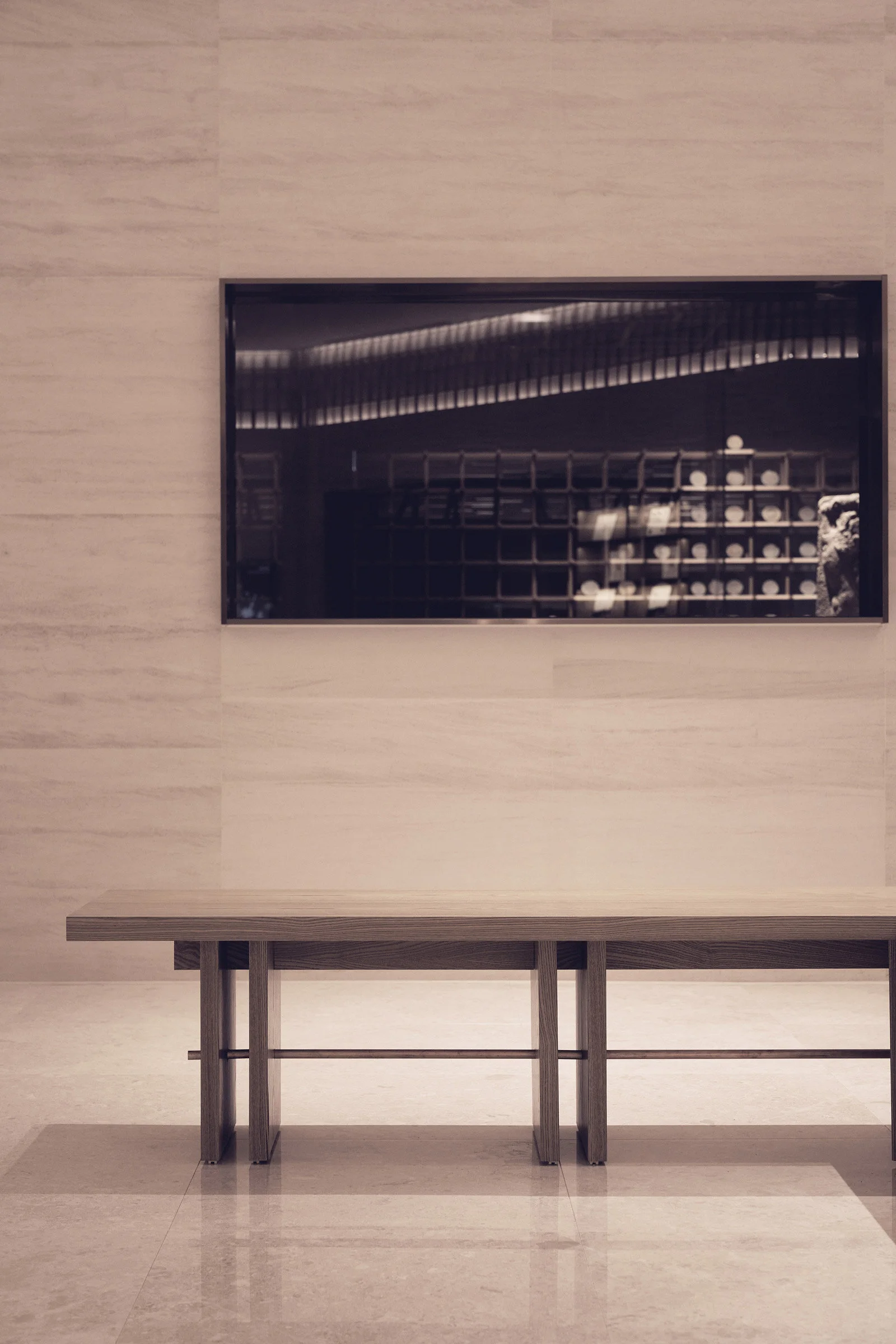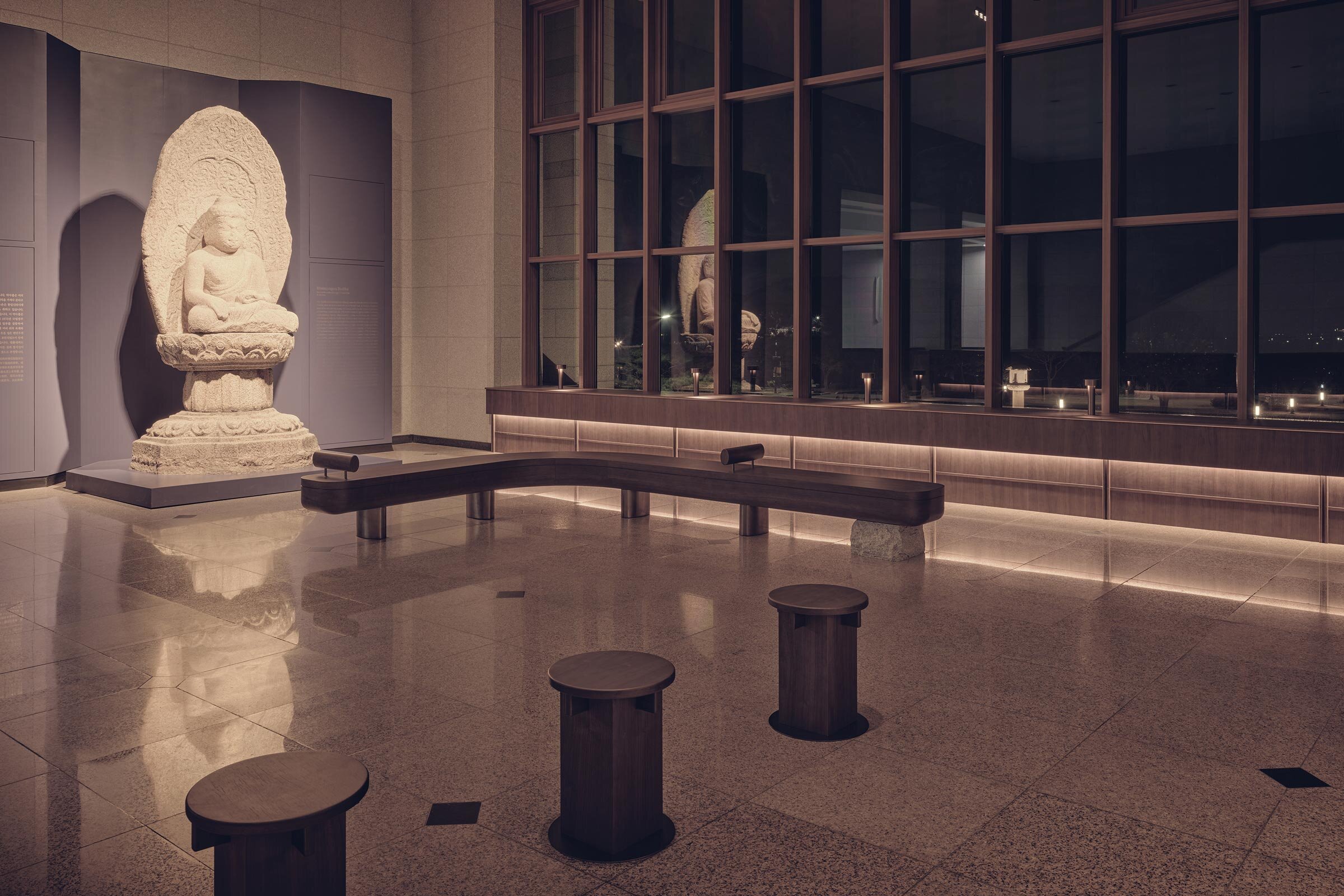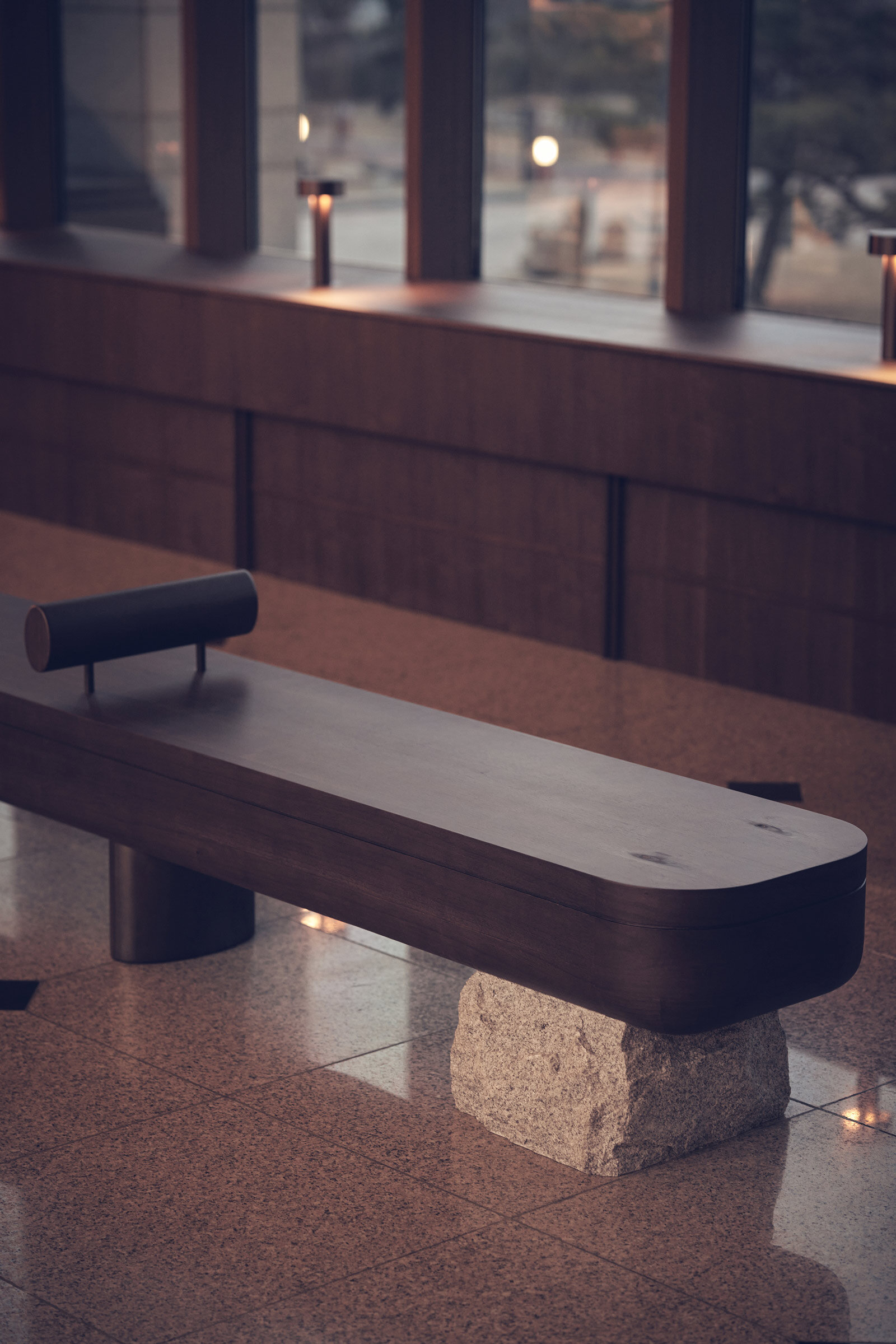Breathing New Life into History
Korean designer Teo Yang redesigned the lobby spaces of Gyeongju National Museum’s Silla History Gallery and Silla Art Gallery with the intention of creating emotional connections between people, space and objects, and fostering deeper engagement with history and culture
Design Anthology: Can you tell us about the client and what they commissioned you to work on for the project?
Teo Yang: The Gyeongju National Museum commissioned our studio to design the lobbies of its Silla History Gallery and Silla Art Gallery. They wanted to give new life to the lobby space and its artefacts, while expressing the depth of Silla history and culture within the museum space.
What’s unique about the building and the location?
Gyeongju was the capital of the ancient kingdom of Silla, which ruled the majority of the Korean Peninsula for almost a thousand years. When Silla became a powerful country, Gyeongju was the fourth largest city in the world. A vast number of archaeological sites and cultural artefacts from this period remain in the city, leading it to be called ‘the museum without walls’. The Gyeongju National Museum — founded in 1945 — houses about 4,500 artifacts from the era, while an outdoor exhibition area showcases elements of royal palaces and temples.
The 400-square-metre renovation project involved redesigning the entire lobby and rest area that’s at the centre of the building and divides the four galleries around it. We also remodelled the lobby space on the second floor of the Silla Art Gallery, which we designed as a quiet, subtle space for visitors to rest and take a break while in the museum.
How did you approach the project — what design references did you try to incorporate into the space?
I used the idea of ‘rediscovering locality and traditional culture’ as a starting point to reinterpret Korea’s unique architectural beauty and aesthetics. Our design of the Silla History Gallery lobby aims to prove that the age-old artifacts can still inspire contemporary design. For example, we reinterpreted the geometric patterns of the earthen wares in the decorative elements in the space, and the gold, silver and bronze ornaments inspired the creation of bronze lights and mirrors on the ceiling, to reflect the extravagance of the ancient culture.
Please tell us a little about the material choices for the space.
In terms of aesthetics in the main lobby, our goal was to create a simple yet compelling and sophisticated space by carefully mixing bold architectural gestures with detailed craft. Neutral-toned marble on the walls and floors blends with handcrafted wood louvre details and concealed lighting. The central ceiling structure, a focal point in the lobby space, is inspired by Silla's architecture and features gentle lighting, wood details and bronze mirrors. We also interpreted the image of traditional pillars into lighting columns that emphasise a sense of symmetry and rhythm in the space.
In the art gallery lobby, all furniture & lighting was custom made, with two Buddha statues and the view of Namsan mountain forming a tranquil space.
Do you have a favourite element or design detail in the architecture or interiors?
Our favourite element of the design is the spatial narrative that we created for the museum lobby. We wanted to express three main goals: to foster emotional connections in the space, to provide a place for rest, and to encourage visitors to view the artefacts in a new way. Our intention for the lobby if that it’s more than just a physical space, but an emotional tool to engage visitors even further.
Another expression of this emotional connection is the window that now looks from the lobby into the gallery halls, intended to heighten curiosity, and the new rest zone between galleries, where a beautiful stone sculpture of a lion sits in front of the full-height glass window overlooking Gyeongju’s mountains. We placed some of the relics in the centre of the lobby, without any glass display cases, to provide a new viewing experience and allow people to get closer to the artifacts and observe their real colours and textures.
We used materials that can be locally sourced in Gyeongju, like wood and unprocessed natural granite stones (the same stone that was used to build the Buddha statues for thousands of years) to create the furniture, with bronze metal used to give the furniture a more contemporary look.
Images / Studio Sim




























